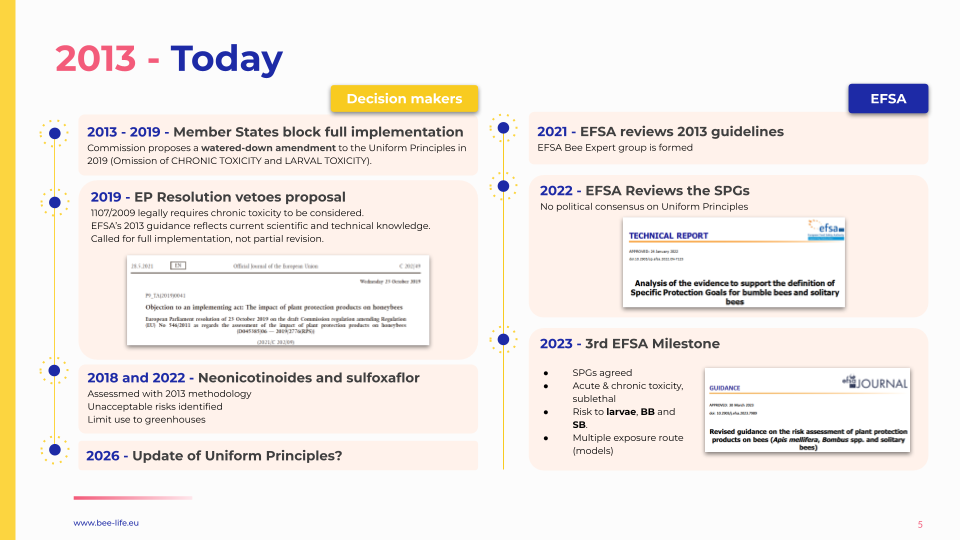Pesticide History: from the First Warnings to Today’s Challenges
- beelifeeu
- 56 minutes ago
- 2 min lire

For more than two decades, beekeepers and scientists have been raising the alarm about the hidden effects of pesticides. In the late 1990s, Europe began facing massive colony losses, while researchers uncovered how even low, chronic exposure to neonicotinoids could impair bees’ orientation, memory, and reproduction.
By 2008, European beekeepers had organised through the Task Force on European Beekeeping Coordination, calling for pesticide risk assessments that matched real-world conditions. The European Food Safety Authority (EFSA) responded. Between 2011 and 2013, its Bee Guidance Document introduced a revolutionary framework—one that finally considered not only acute toxicity but also chronic, larval, and sublethal impacts across different bee species.
Despite its strong scientific foundation, the guidance was never fully implemented. Several EU Member States opposed it, claiming the new criteria were “too demanding.” As a result, Europe has continued to assess pesticides using outdated principles, even as evidence of their broader ecological impact grows.
In the years that followed, EFSA reaffirmed its position. New assessments in 2018 and 2022 confirmed unacceptable risks for certain substances, leading to tighter restrictions such as greenhouse-only use. By 2023, the agency had updated its standards again—highlighting the need to include all toxicity routes, from acute to chronic and sublethal, in pesticide evaluations.


Quick Take
EFSA’s Bee Guidance (2013) remains one of the most comprehensive and science-based tools for assessing pesticide risks.
Political resistance has delayed its full adoption for over a decade.
The data are clear: modern risk assessment must account for chronic and sublethal effects if we are to protect pollinators and ecosystems effectively.


